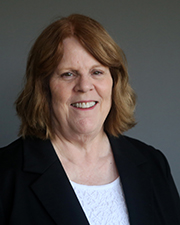AAU membership: A 115-year history of recognition for KU
The University of Kansas is one of just 71 research universities — only 38 of them public institutions — who hold membership in the Association of American Universities. KU was invited to join the AAU in 1909, just nine years after the organization was founded.
 Chancellor Douglas Girod noted in a video on AAU as one of KU’s core foundations, “The advantage of being a member, beyond being recognized as one of the top research programs nationally, is that we have greater opportunities to receive federal funding for research that improves public health, addresses national challenges, and contributes to the nation’s economic strength.” In addition, KU derives great benefit from the AAU’s advocacy efforts in Washington, D.C., for research and higher education funding and for policy and regulatory issues that affect research universities.
Chancellor Douglas Girod noted in a video on AAU as one of KU’s core foundations, “The advantage of being a member, beyond being recognized as one of the top research programs nationally, is that we have greater opportunities to receive federal funding for research that improves public health, addresses national challenges, and contributes to the nation’s economic strength.” In addition, KU derives great benefit from the AAU’s advocacy efforts in Washington, D.C., for research and higher education funding and for policy and regulatory issues that affect research universities.
AAU ranks its members using a public set of criteria. These metrics are used to evaluate current and potential members and are organized into Phase I and Phase II indicators. Phase I indicators are quantitative and given priority consideration for member evaluation, so they are a primary focus for KU’s faculty recognition and awards program. They include:
- Competitive federal research & development expenditures (excluding USDA)
- Membership in selected congressionally chartered National Academies (Science, Engineering, Medicine)
- Prestigious and highly prestigious faculty awards, fellowships and memberships (as defined by the National Research Council) received annually
- Citation count attributed to current KU faculty
By nominating our faculty who are strong candidates for membership in the National Academies of Science, Engineering and Medicine, as well as for other prestigious and highly prestigious awards for research, we strengthen KU’s ranking in the AAU and our overall reputation as one of the nation’s leading research universities. Recognition for research excellence enhances our ability to recruit and retain innovative faculty and scholars, and it signals to prospective students that they will gain exposure to a wide range of interdisciplinary research to equip them with exceptional scholarship and critical-thinking skills that prepare them to succeed in a global society.